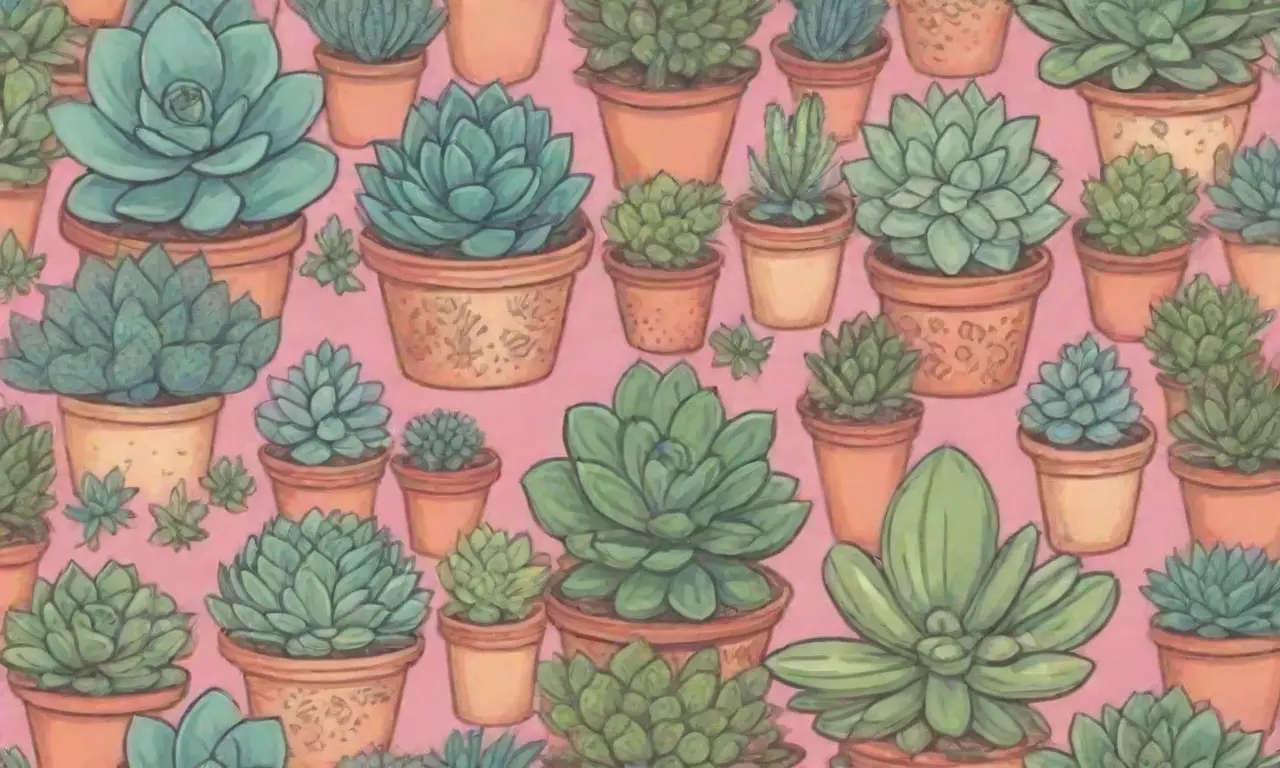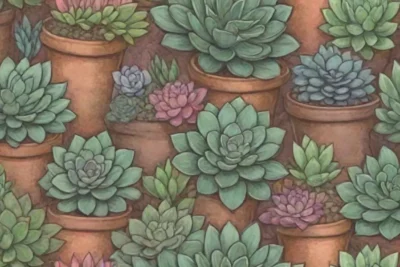
Tailoring Your Care Routine to Various Succulent Growth Patterns

Introduction
Succulents have become incredibly popular in recent years, not only for their unique beauty but also for their ability to thrive in a variety of environments with minimal maintenance. These plants are known for their fleshy leaves and stems that allow them to store water efficiently, making them resilient in dry conditions. However, the growth patterns of succulents can vary significantly across different species, and understanding these variations is key to providing the best care for them.
In this article, we will delve into the fascinating world of succulents, exploring the various growth patterns they exhibit and how these can influence their care routines. We will break down the different types of growth patterns, discuss the factors that affect their growth, and provide tailored care tips that can help you cultivate healthy and thriving succulents. Whether you are a seasoned succulent keeper or a newcomer looking to enhance your green thumb, this guide will offer valuable insights that cater to your plants' specific needs.
Understanding Succulent Growth Patterns
Succulents primarily exhibit three types of growth patterns: rosette, columnar, and creeping. These patterns are not just aesthetic; they play a crucial role in the adaptations and survival strategies of the plants in their natural habitats.
Rosette Growth Pattern
The rosette growth pattern is characterized by a tightly packed arrangement of leaves that radiate from a central point, resembling a flower. This growth form is typical among many popular types of succulents, including Echeveria, Aloe, and Sedum. The leaves in a rosette are usually fleshy and can form intricate shapes, which not only serve as a reservoir for water but also assist in photosynthesis by maximizing sunlight intake.
To care for rosette-type succulents, it is essential to provide them with well-draining soil to prevent root rot, a common issue due to excessive moisture. They thrive in bright but filtered light, making a south or west-facing window an ideal location. Overwatering can lead to leggy growth as the plant reaches for light, so it is vital to allow the soil to dry out completely between waterings. Fertilizing rosette succulents during the growing season with a diluted, balanced fertilizer can promote vibrant growth and flower production, showcasing their full beauty.
Columnar Growth Pattern
In contrast to the rosette pattern, the columnar growth pattern is seen in succulents that grow upright and tall, often resembling cacti. Examples of columnar succulents include the Cereus and Carnegiea gigantea (the Saguaro cactus). These plants are typically slow-growing and can reach impressive heights over time. Their structure is designed to minimize water loss while maximizing sunlight exposure, an adaptation essential for thriving in arid environments.
Care for columnar succulents should focus on not just sunlight but also spacing. Given their upright nature, these plants need plenty of air circulation around them to prevent fungal diseases. They also require a gritty, well-draining soil mix to facilitate their deep root systems. While columnar succulents are generally drought-tolerant, it is important to water them regularly during their growing season. However, during the dormancy phase in the winter, watering should be significantly reduced to allow them to rest. Fertilizing columnar succulents should be done less frequently compared to rosettes, as they do not require as much nutritional input.
 Key Indicators of Healthy vs. Unhealthy Growth in Succulents
Key Indicators of Healthy vs. Unhealthy Growth in SucculentsCreeping Growth Pattern
The creeping growth pattern is characterized by a sprawling, ground-hugging appearance, typical of succulents like Sedum morganianum (Burro’s Tail) and Delosperma. These succulents often produce long stems that spread outwards, forming a lush carpet of greenery, which can serve as an effective ground cover in gardens or pots. Their growth habit allows them to capture water more efficiently from light rains, which is beneficial in their native habitats.
Caring for creeping succulents involves ensuring that they have sufficient room to spread out. These plants thrive in bright, direct sunlight but can also tolerate partial shade. They prefer a sandy, well-draining soil to prevent rot as they are particularly susceptible to overwatering. While they can handle dry conditions, regular watering during the growing season will encourage denser growth and vibrant colors. It's also advisable to trim back leggy or overgrown stems periodically to maintain a tidy appearance and to promote bushier growth.
Factors Influencing Succulent Growth Patterns
Understanding the factors that influence growth patterns is essential for succulent care. A variety of variables such as light, temperature, soil moisture, and fertilization play significant roles in how these plants develop and thrive.
Light Conditions
Light is perhaps the most critical factor in determining a succulent's growth pattern. Different succulents have varying light requirements; some thrive in full sun, while others prefer partial shade. Rosette-forming succulents, for instance, benefit from bright indirect light to maintain their compact form. If deprived of adequate light, they can elongate, becoming leggy as they stretch toward the light source.
On the other hand, columnar succulents typically seek direct sunlight to encourage upright growth. Insufficient sunlight can lead to weak, floppy stems and stunted growth. Therefore, conducting light assessments where your plants live is crucial to determine how to position them or whether any supplementary lighting is needed, especially during the winter months when sunlight is limited.
Temperature and Seasonal Changes
The temperature and seasonal changes can also impact succulent growth. Most succulents prefer a warm environment ranging from 70°F to 90°F during the day and cooler temperatures during the night. Extreme temperatures, both hot and cold, can stress the plants, leading to poor growth or even death. During winter dormancy, many succulents require cooler temperatures, mimicking their natural cycles and thus allowing them to rest and conserve energy for the next growing season.
Additionally, awareness of seasonal changes around watering habits is essential. In many regions, succulents prefer a dry period in the cold months, learning to reduce their water intake significantly during this time. Using moisture meters or checking the soil often will help you understand when to resume regular watering as temperatures rise once more in spring.
 Exploring How Temperature Affects Succulent Growth Behavior
Exploring How Temperature Affects Succulent Growth BehaviorSoil and Fertilization
The type of soil used is integral in supporting the health and growth of succulents. Heavy, compact soils retain moisture, which can lead to root rot in succulents that thrive in dryer conditions. A specialized succulent mix or a DIY blend that includes components like sand, perlite, and peat moss can create an ideal environment for growth.
In terms of fertilization, this should be approached thoughtfully, depending on the growth pattern. Rosette succulents generally respond well to regular fertilization during the spring and summer, while creeping varieties may not require as frequent feeding. A diluted balanced fertilizer will encourage strong growth and vibrant colors throughout their active growth phases.
Conclusion

In summary, tailoring your care routine to the various growth patterns present in succulents is crucial for maintaining their health and ensuring their robust growth. By understanding the specific needs of rosette, columnar, and creeping succulents, you can provide a more focused and effective care regimen that caters to the unique characteristics of each type. This involves considering their light requirements, adapting watering practices according to their growth patterns, and selecting the right soils and fertilization methods.
Moreover, being mindful of environmental factors such as temperature and seasonal changes will further enhance your ability to cultivate thriving succulent gardens. As you embark on or continue your succulent journey, keep in mind that nurturing these plants with attention to their growth habits will not only lead to their well-being but can transform your spaces into green sanctuaries filled with vibrant life.
Ultimately, each succulent is a testament to the intricate and beautiful ways in which nature adapts to its environment. By embracing these patterns and tailoring your care routine effectively, you contribute to the flourishing beauty of these remarkable plants. Happy gardening!
 Unveiling the Secrets of Succulent Growth Patterns for Beginners
Unveiling the Secrets of Succulent Growth Patterns for BeginnersIf you want to read more articles similar to Tailoring Your Care Routine to Various Succulent Growth Patterns, you can visit the Growth Patterns category.





You Must Read